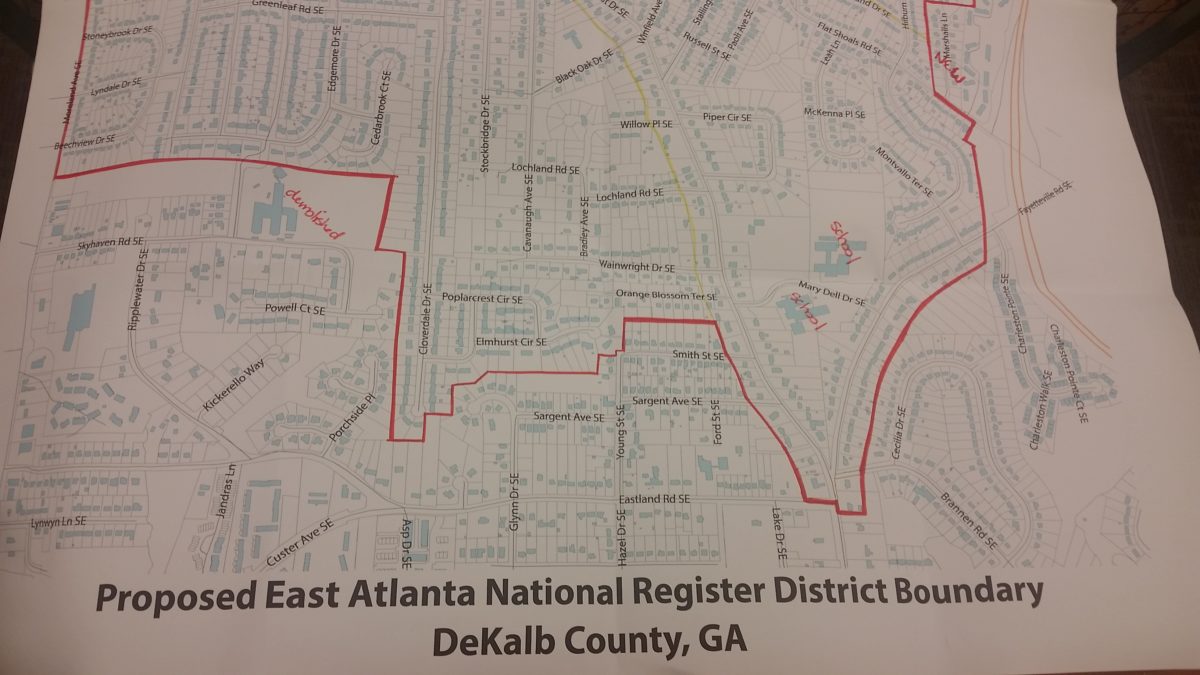Group Working To Get Historic Status For East Atlanta

Miranda Hawkins / WABE
Audio version of this story here.
There’s a push to get East Atlanta placed on the National Register of Historic Places.
The East Atlanta Community Association is sponsoring the nomination, and Georgia State graduate students are working on the draft to submit for the application.
Stephanie Cherry-Farmer, a historic preservationist and the project coordinator with the community association, lives the area. With all the development in the area, now is the time to apply, according to her.
“The more historic buildings that we lose the less integrity the neighborhood has, and we need integrity to qualify for the national register,” she said.
Students met with community members Tuesday night to gather more history on the area and find new leads in their research. Ralph Green, who has lived in the same house in East Atlanta for 37 years, stopped by the meeting to drop off some news articles from the early 1900s.
Green said he thinks getting East Atlanta listed on the national register is a step in the right direction.
“The historic character’s been destroyed,” he said. “So I’m very sad. The old school is now these junky apartments.”
Cherry-Farmer said East Atlanta began in the late 1800’s as a streetcar community. The General McPherson Monument on the Northeast corner of Monument Avenue was what initially attracted people to live at the edge of Atlanta.
“[They would say], ‘Oh this is a monument [and] here’s a great area of town,’” she said. “We’re going to develop it. Wouldn’t you like to live close to the monument?”
Although East Atlanta began as a separate municipality, it was incorporated into the city of Atlanta too quickly to have a separate government. That’s why the neighborhood looks different than other areas of Atlanta because it’s built with a commercial core surrounded by residential development.
The construction of Interstate 20 in 1962 dramatically changed the landscape. It split the community and molded the way East Atlanta looked around the exits and entrances to the highway.
After an economic slump in the 1970s, the area is seeing new development. Cherry-Farmer said it’s being revitalized, with more businesses and young people moving back into the neighborhood as a result.
If East Atlanta is accepted onto the national register, it won’t dictate what a developer can and cannot do with a property. But it will give tax incentives that might entice developers to restore rather than demolish buildings.
The group will present its final draft to the community next month and submit the application by this summer.
9(MDAxODM0MDY4MDEyMTY4NDA3MzI3YjkzMw004))








